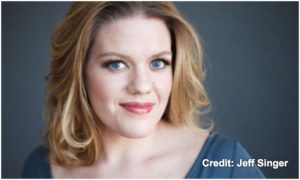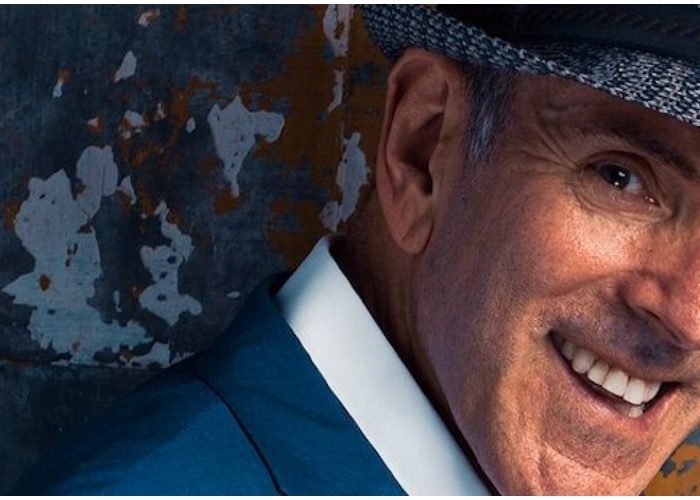
Q & A: Soprano Wendy Bryn Harmer on ‘The Ring’ at the Met
By Chris RuelDramatic soprano Wendy Bryn Harmer knows her way around Wagner’s “Ring.”
The California native has sung multiple roles in the composer’s epic cycle at some of the most prestigious houses. This spring she’s back at the Met singing in three out of the four operas, performing Freia in “Das Rheingold,” Ortlinde in “Die Walküre,” and Third Norn in “Götterdämerung.”
The Met is a special place for Harmer. It was on the Met stage where she sang her first Wagner role; she is also a graduate of the Met’s Lindemann Young Artist Development Program. Harmer’s past performances at the house have been praised by “The New York Times” and “The Wall Street Journal.”
Singing three or even four roles throughout the cycle is not unusual for the soprano. The number of top-rated Wagnerians is small, and together they form an elite crew of specialists who take on the most demanding music in the standard repertoire.
In a recent interview with OperaWire, Harmer discussed Wagner’s music, the roles she sings, Wagnerians, and “Agatha,” the Met’s monstrous opera machine.
OperaWire: What draws you to Wagner’s music?
Wendy Bryn Harmer: It’s the lushness of the sound; I find some of the most moving musical moments in Wagner. People think of him as just horns and the “Ride of the Valkyries,” and that is absolutely not the case. Especially in “Rhinegold” and “Götterdammerüng.” During the love duet in “Walküre,” there are lovely moments that I think are made even more tender by the rich and lush orchestration that follows. The leitmotifs are fantastic.
OW: When was your first Wagner experience?
WBH: I saw “Fliegende Holländer” with James Morris as the Dutchman during my sophomore year at the Boston Conservatory of Music.
My first experience singing Wagner was when I was part of the Met’s Lindemann Young Artist Development Program. At the time, Lenore Rosenberg was running the program, and she basically tailored it to become my masters; and, knowing very early on that my focus would be the German repertoire, she had me studying Wagner a lot. I sang my first Wagner role during my first season at the Met as a Flower Maiden in “Parsifal.”
OW: When singing multiple roles, what is your rehearsal schedule like?
WBH: At the end of several “Rheingold” rehearsals, I had to head to a “Walküre” rehearsal. Occasionally, I’d be called to different rehearsals at the same time. Since I’ve done multiple roles within “The Ring” before, I’m used to directors having to fight over who gets me as Freia, or as a Valkyrie or the Third Norn; they figure it out. Usually whatever part of the cycle is on stage takes priority.
OW: Which roles within the cycle do you sing most often?
WBH: I am typically Freia in “Rheingold,” and either Gutrune or Third Norn in “Götterdämerung.” Then depending on the opera house, I’m a Valkyrie. Here, at the Met, I’m always Ortlinde, but at other companies, I’ve been Gerhilde or others.
OW: Of the three roles you are performing at the Met, do you have a favorite?
WBH: I am excited to be singing Third Norn this time around in “Götterdamerüng.” The Norn scene is probably my favorite in all of “The Ring.” Typically, I sing Gutrune at the Met. The last time I sang Third Norn here in New York was in the Otto Schenk production.
OW: How do you prepare for the wide range of roles you sing in the cycle?
WBH: It’s different depending on the production. At the Met, so much of my preparation needs to be physical because of what I’m required to do on the machine. I read quite a bit about the history of the piece, looking at what Wagner took from mythology and what he added on his own.
A couple of years ago for Christmas, my husband got me a fantastic translation of the “Ring of the Nibelung” —the original mythology; that was helpful. Now with the Internet, I can get program notes from all over to learn about the characters and the history of who performed them.
I sing Sieglinde, though not at the Met. When I sing the role, some people think I’m more of a Brünnhilde and want to cast me as such. With my research I’m able to go and prove that a lot of Brünnhildes first sang Sieglinde and didn’t take on Brünnhilde until they were in their forties; I’m not there yet.
OW: Because performing “The Ring” is so rigorous, how do you keep yourself in top form?
WBH: I’m a big fan of technique, technique, technique. I think one of the most important things to do for your voice is to do a physical warm up before you do a vocal warmup. I do a lot of yoga to stretch and to make sure I’m breathing properly before I sing. I steam, I hydrate, and I don’t drink alcohol or coffee at all; those things are dehydrating.
I have two children so if I’m going to catch a bug, I’m going to catch a bug; there’s not much I can do about it; but, luckily, I tend to not. During flu season, I do my best to avoid sugar because I find that that weakens my immune system.
OW: What is the chemistry like within the cast?
WBH: The chemistry among this particular cast is really fun. Wagnerians are the best! In general, we tend to be much more relaxed humans. There’s no time for ego, there’s no room for ego; it’s a long night.
I have a great time on stage with my colleagues. There comes a point, whether it’s Wagner or not, where we’ve all pretty much worked with each other on different productions. For Greer Grimsley and me, this is our fourth complete “Ring” cycle, and we’ve also done two “Fliegende Holländer,” and a “Fidelio.”
OW: What has it been like working with Maestro Philippe Jordan?
WBH: It’s been a new experience. No one’s more excited than Philippe when you get something right, or when you take a suggestion and make it work.
As for the music, he’s taking it at a faster tempo than I’m used to, making it really interesting and very refreshing. I don’t say faster as if that’s good or bad, just different.
During the first week of rehearsals, I wondered why we were singing so fast, but throughout the three weeks, Philippe’s tempi kind of slowed down and our tempi sped up. A colleague and I were speaking about the timing of the final “Rheingold” rehearsal. It came in at about two hours and twenty-four minutes and the last time we did the show together with a different conductor it came in at two hours and forty-one minutes; that’s a considerable amount of time.
Philippe is also great fun to work with. We had a break during one rehearsal while the crew worked on the machine and he came out of the pit to show us pictures of his cat.
OW: People who know the Met production are familiar with the famous machine, but many around the world may not know of the massive contraption that makes the “The Ring” at the Met a magical experience. What can you tell readers about the machine?
WBH: Oh, she’s a piece of work, that one! The cast has gone back and forth on what we want to name her. I think we’ve decided that she’s Agatha! It’s amazing because she becomes a character in this piece. When the machine is working beautifully, there really are incredible moments.
But every now and then, if she isn’t working properly, there’s nothing you can do. There are no workarounds. The Met invests a lot of time and energy into this revival, and the biggest difference I have noticed is the machine is so quiet—it’s not distracting. The machine used to be loud, and the movement very noticeable.
OW: How many people run the machine? What is happening behind the scenes?
WBH: If I’m not mistaken, the machine has 24 planks, and, at times, each plank has its own stagehand—especially during the “Ride of the Valkyries.” I never see so much crew backstage than I do when performing Wagner’s “Ring” at the Met.
There are stage managers under the set that aren’t visible unless you’re entering through the A-Level stage and coming up a lift. Plus, there are several stagehands, and a stage manager under the deck the entire two and a half hours of “Rhinegold.”
The last time I did “Götterdammerüng,” my entrance was on a lift. I was singing Gutrune, and I’m eating dinner with my brothers. The table and chairs just fit on the lift. There was a safety net around us, but to keep me distracted so I wouldn’t look down 40 feet to emptiness, a stage manager would hand me an orange. I’d peel it as we went up the lift. Of course, there are all the safety measures, but still, it can be unsettling.
OW: Do you have any closing thoughts you would like opera fans to know about the Met’s production of “The Ring.”
WBH: There’s nowhere else in the world, there is no other company in the world that could do this. And I think it’s not just because of the size of the Met stage, but because of the size of the Met’s support staff. I wish the crew had its own curtain call. I think they deserve one because no one on stage is working as hard as everyone backstage.*
*The Met crew did indeed get a curtain call after the opening of “Das Rheingold.”


